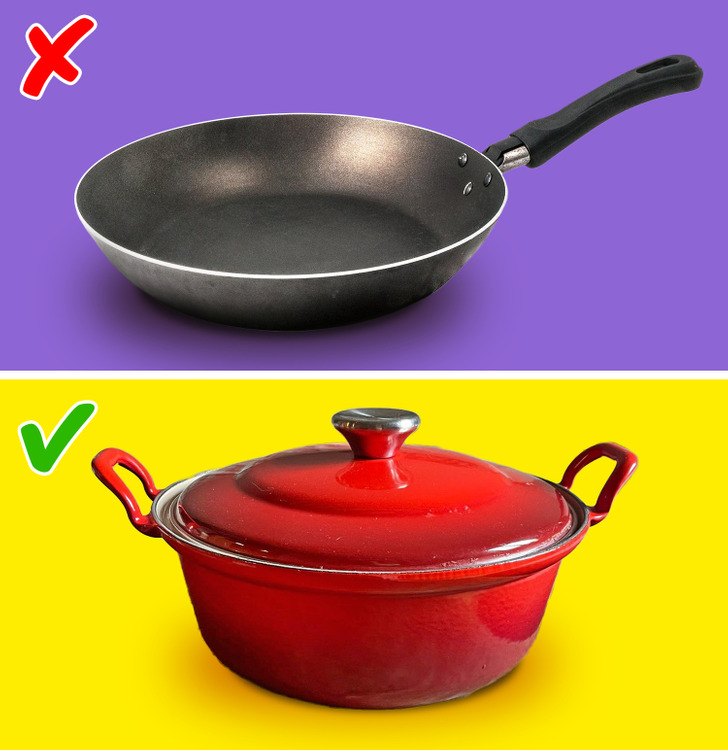How to Fry Foods at Home Perfectly Every Time
Frying food is one of the methods many people use when preparing a meal. There are many different ways that you can fry your food, and that mostly depends on what you are preparing and what flavors you want to get at the end.
5-Minute Crafts will share some tips and tricks with you so you can get the most out of the frying pan and have your food come out perfectly crispy.
Different ways of frying food
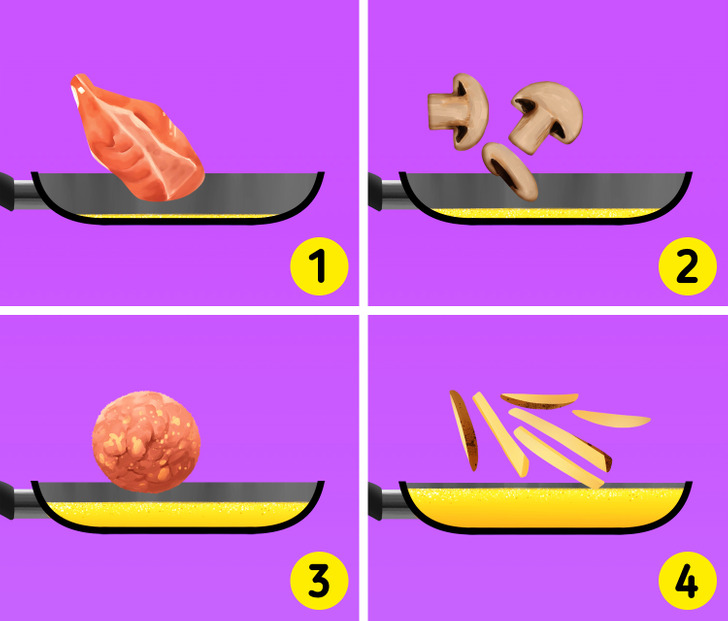
There is more than one way you can fry your food. You can try:
- Pan-frying: Add a small amount of oil to a pan that is hot, then put the food inside of it. This is the best way to cook ingredients like steak or chicken breast because the outer part will have a dark-brown crust while the inside will be soft and juicy.
- Sauteing: For this method, you also need a small amount of oil to cover the bottom of the pan. You can saute fast-cooking ingredients, like veggies or shrimp, but you need to constantly move them until they caramelize.
- Shallow frying: It’s great for foods that are battered or breaded, like fish cakes or fritters. In the end, the food will have a golden-brown color and will be crispy on the outside. Fill the pan with more oil, (it needs to cover the bottom), and when the temperature is right, fry the ingredients.
- Deep frying: You’ll need to add much more oil here, then dip the food that was previously battered into it. Cook it until it gets crispy. Deep-frying is best for making chicken, doughnuts, fish, and some other foods.
1. Choose the right oil.
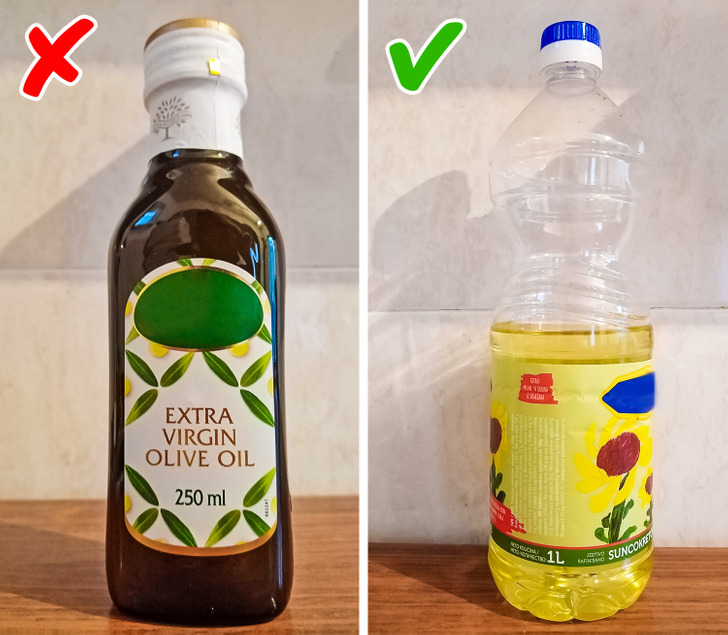
It’s recommended to use plant-based oil with a high smoke point. The smoke point is actually the temperature at which the food will stop simmering and the oil will start to burn and smoke. This can result in burnt food and can be potentially dangerous. It’s better to choose high-heat vegetable oils for the following reasons:
- They can sustain very high temperatures.
- They all usually have a neutral taste and are refined.
- They’re great for deep frying, stir-frying, and pan-frying.
- You can use sunflower oil, corn oil, soybean, peanut, safflower, refined olive oil, etc.
Note: Avoid oils with a low-smoke point, like flaxseed, pumpkinseed, or walnut for frying. They are best to use as dips or in a salad dressing.
2. Check the temperature.
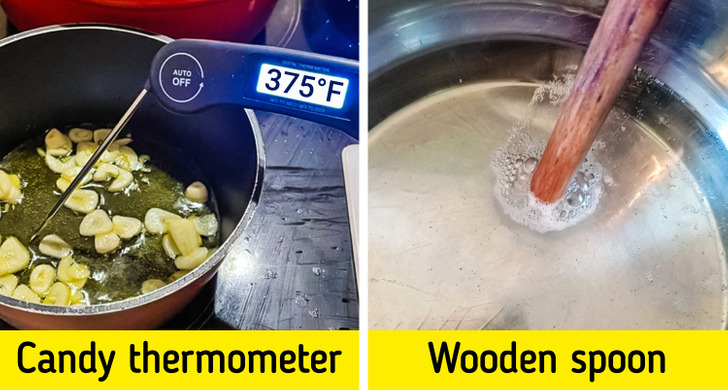
Reaching the right temperature is a crucial part of successful deep-frying. Heat up the empty pan before adding the oil. Then follow the next steps to bring the oil to the right heat:
- Use a deep-fry or candy thermometer to check how hot the oil is.
- The temperature needs to be between 350°F and 375°F.
- If the oil is cool, the food will be greasy, and if it’s too hot, the meal will end up burnt.
- If you don’t have a thermometer, you can test it with a wooden spoon — just put it in the oil and if you see the bubbles around the spoon, the oil is ready for cooking.
3. Dredge the ingredients.
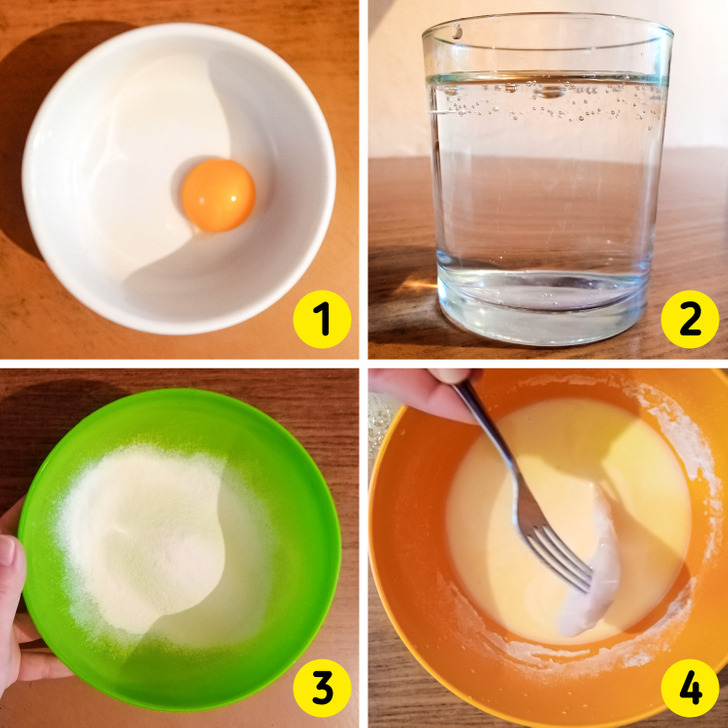
Dredging is a technique you can use before frying food. First, you need to put the ingredient in the flour, then dip it in eggs. Lastly, coat it with breadcrumbs. You can also use a variation of this.
The batter gives the fried food an airy, crispy, crunchy coating:
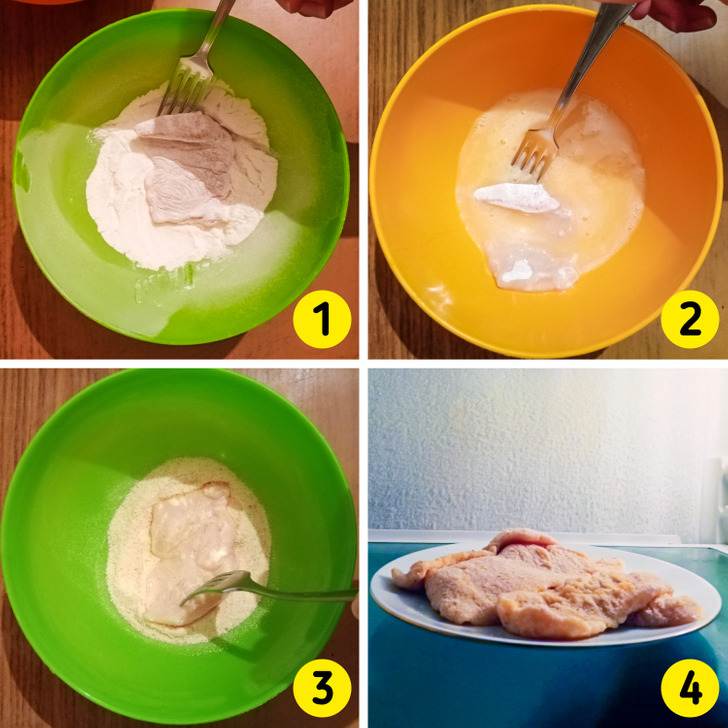
The breading is similar but the fried food has a more bumpy structure, which makes it crunchy. Do the following steps:
- Dredge it in the flour.
- Dip it in the egg wash (a mix of beaten egg with 1 or 2 tablespoons of milk/water).
- Coat it with breadcrumbs (like panko).
- Let it sit for 15 minutes in the fridge so the breading can stick to the food better.
Tip: It’s best if you use one hand for coating the ingredient in flour and breadcrumbs and the other for mixing it with egg wash. In this way, one hand will be dry and you’ll make less mess.
4. Rinse and dry the food before frying.
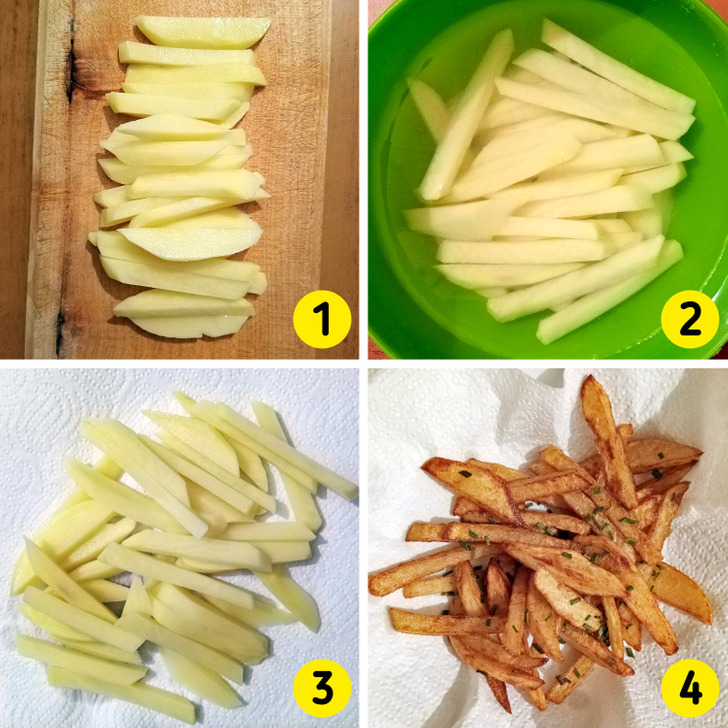
Some food, like potatoes, will fry better if you rinse them before cooking:
- Cut them into thick, even slices.
- Leave them to soak in cold water for 30 minutes.
- Dry them with a paper towel.
- Fry them when they are completely dry. Otherwise, the water can cause oil to pop and splatter.
Note: You can also soak zucchini pieces in cold water before frying them. Add 4 cups of ice water and 2 tablespoons of salt and leave them in the solution for an hour.
5. Use tongs and don’t overcrowd the pan.
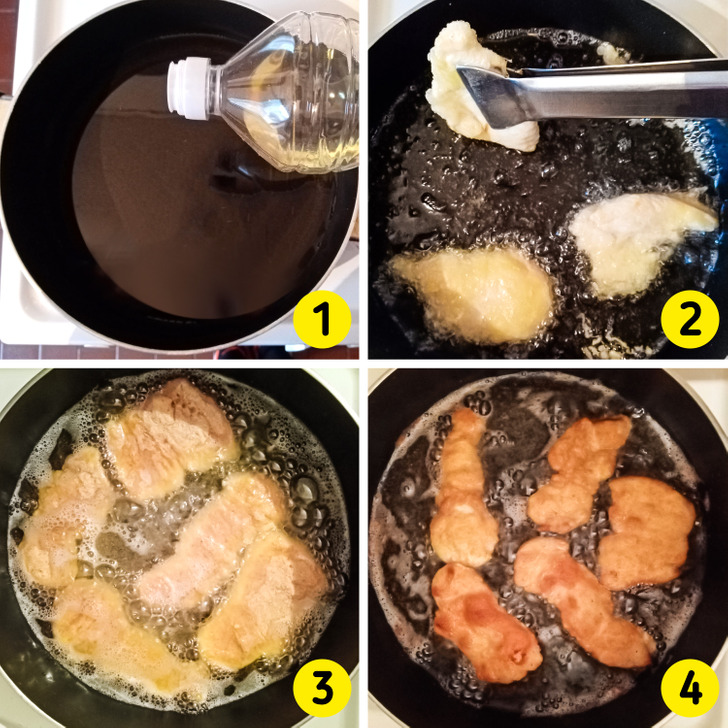
Another tip for safety is to use tongs so the oil won’t splash around when you put the food in it. Other things that you should pay attention to are:
- Add enough oil — it should come halfway up the sides of the frying ingredient.
- Do not overcrowd the pan — this will decrease the oil temperature.
- Make sure that all the food can fit in one even layer — if it isn’t possible, then fry in batches.
- Cut the food evenly to be sure that all the pieces are cooked evenly, then cut them into similar sizes. Be aware that the larger parts will need more time to cook.
6. Spice it at the right time.
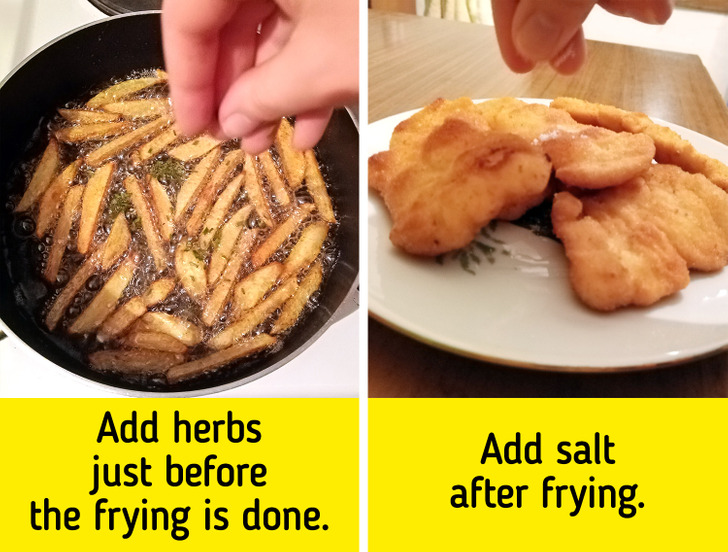
To spice up the flavor of your fried chicken wings or crispy potato chips, do the following:
- A few minutes before the food is cooked, you can add herbs, like thyme, rosemary, or garlic.
- Salt food after you take it out of the pan and while it’s still hot. Don’t salt it during frying, as it can cause oil to pop, or the seasoning can fall off and burn in the oil.
Note: You can add the seasoning to the frying coating mix for better crispiness.
7. Know when it’s done.
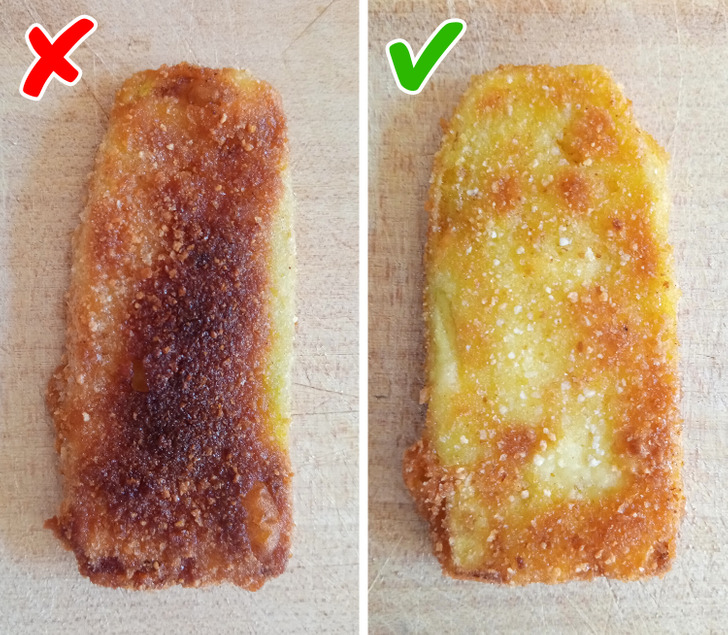
The food is usually done when the coating gets a golden-brown color, but don’t leave them for too long because they will get burnt. However, this applies to french fries, chips, or donuts, but not to meat.
- For example, the chicken wings need 7-8 minutes to cook but will get a golden color after 4 minutes. In this case, it’s best to use the thermometer to check the oil temperature.
- The temperature should be kept at 315°F for the rest of the cooking. If you don’t have a thermometer, you can cut the meat and check if it’s done.
Note: If you’re frying food in batches, be sure to take a break in between so the oil can get to the temperature that it was before.
